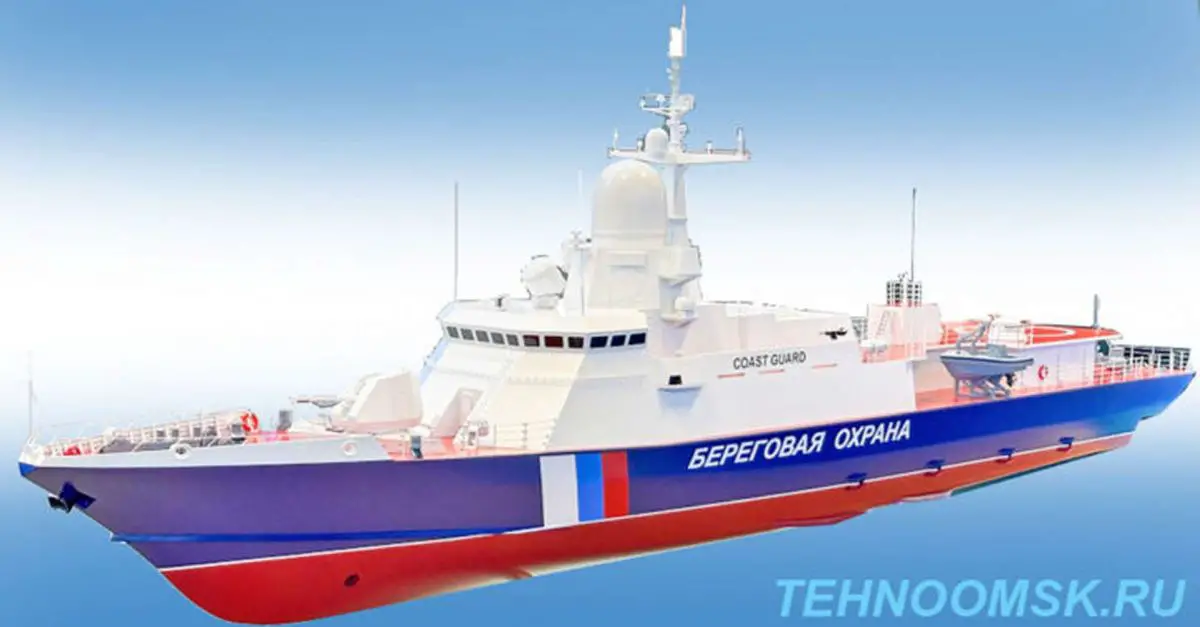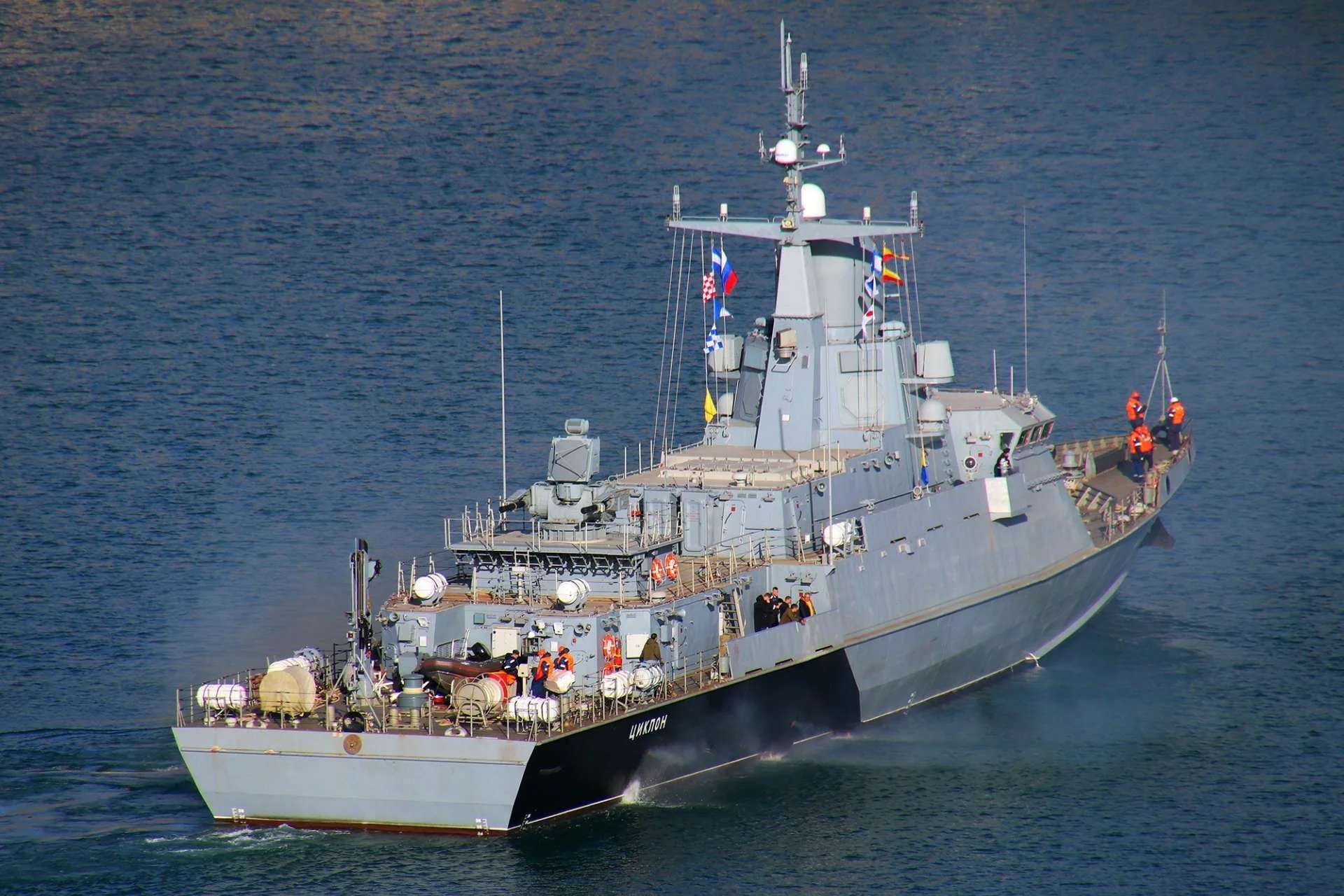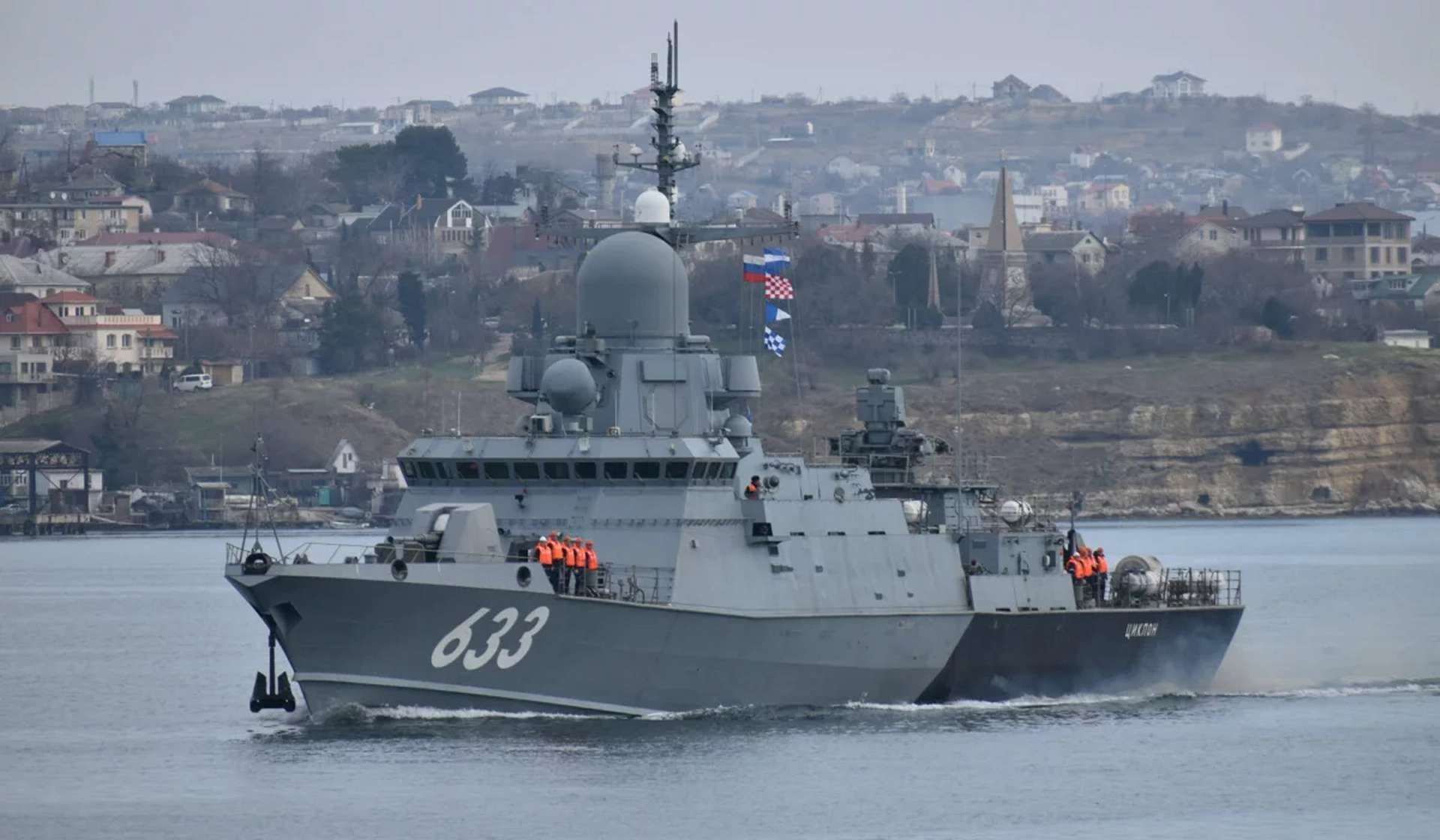Breaking News
Russian Coast Guard's future patrol ship will be based on Project 22800 Karakurt Class missile corvette.
According to Tehnoomsk on June 28, 2024, Russia is currently developing a new patrol ship using the Karakurt class as a platform. Shipbuilders from the Leningrad shipyard "Pella" and engineers from the Central Marine Design Bureau "Almaz" are working on this project for the Coast Guard of the Border Service of the FSB of Russia. This project leverages the established design of the Project 22800 Karakurt class missile corvette. The new vessel will be equipped with the Resurs 3K96-3E multi-channel anti-aircraft missile system and various other weapon systems.
Follow Army Recognition on Google News at this link

The armament will include the Resurs 3K96-3E air defense system, a 100-mm universal artillery mount, two six-barreled 30-mm artillery systems, 2x12.7-mm machine guns, DP-64 grenade launchers, and the KT-216 jamming system. (Picture source: Tehnoomsk)
The patrol ship will measure approximately 67 meters in length and have a displacement of 650 tons. It is designed to perform combat missions at speeds exceeding 30 knots (more than 55 km/h) and will have an operational autonomy of up to 30 days. The ship will accommodate a crew of 40. The armament will include the Resurs 3K96-3E air defense system, a 100-mm universal artillery mount, two six-barreled 30-mm artillery systems, 2x12.7-mm machine guns, DP-64 grenade launchers, and the KT-216 jamming system.
The Resurs 3K96-3E multi-channel anti-aircraft missile system, introduced at the MVSM-2021 International Military Fair in St. Petersburg, is a key feature of the new patrol ship. Developed by Almaz-Antey and NPO Almaz, this system is considered an export modification of the "Redut" anti-aircraft missile system, which is in service with the Russian Navy on missile corvettes of the 20380 and 20385 classes. The 3K96-3E "Resurs" system is designed for immediate protection against various aerial threats, including UAVs, with a high reaction speed, particularly effective against highly maneuverable and small targets at short and ultra-short ranges and low altitudes.
The 3K96-3E "Resurs" system includes a command module, a launch module, a power supply system, data storage and processing devices, anti-aircraft missiles (models 9M96E and 9M100E) in integrated launch containers, a land/ship equipment complex (3F96E), a set of exploitation documents, and spare parts. This missile air defense system can engage up to five different air targets simultaneously, with an effective range of 10-28 km and a minimum interception range of 1.0-1.5 km. It covers a 360-degree zone around the ship, ensuring comprehensive protection without the need for special targeting preparations.

Replacing the larger and costlier Project 11356R Burevestnik frigates, which faced production delays due to halted engine supplies from Ukraine, the Karakurt class is armed with a mix of offensive and defensive systems. (Picture source: Russian social media)
The Karakurt class, introduced to the Russian Navy in 2018, serves as the foundation for this new patrol ship. Designed by the Almaz Central Marine Design Bureau, the Karakurt class aims to complement the Project 21631 Buyan-M-class corvettes, which are optimized for shallow waters like the Caspian Sea and large rivers. Despite facing construction delays due to engine supply issues and international sanctions, the Karakurt class remains a significant asset for the Russian Navy, addressing the operational limitations observed in the Buyan-M class in open seas.
These small missile corvettes have a full displacement of 870 tons, a length of 67 meters, and a beam of 11 meters. They are powered by three Zvezda M-507D1 diesel engines and three DGA-315-1 diesel generators, enabling speeds of up to 30 knots and a cruising range of 2,500 miles at 12 knots. Equipped with advanced sensors and processing systems, including the Mineral-M radar, Pozitiv-M 1.2 3D radar, and AESA-type radar, these ships provide robust situational awareness and targeting capabilities.
Replacing the larger and costlier Project 11356R Burevestnik frigates, which faced production delays due to halted engine supplies from Ukraine, the Karakurt class is armed with a mix of offensive and defensive systems. The primary armament includes eight UKSK vertical launch system (VLS) cells capable of launching Kalibr or Oniks missiles. The corvettes also feature a 76.2 mm AK-176MA automatic dual-purpose gun, although the first ship (Mytishchi, ex-Uragan) was armed with a 100 mm A-190 gun. For close-in defense, the first two vessels are equipped with AK-630M gun-based close-in weapon systems (CIWS), while starting from the third ship, the Pantsir-M air defense system has been installed, providing enhanced air defense capabilities.
The construction of these ships involves multiple Russian shipyards, including Pella, More, Zelenodolsk, and Zaliv. As of May 2024, a total of 14 Karakurt-class ships have been built, with four currently in service, two under construction, and two canceled. The class is expected to eventually comprise 18 ships. The first two ships were laid down in December 2015, with subsequent ships being constructed at various shipyards across Russia. The lead ship, originally named Uragan (now Mytishchi), was delivered to the fleet in December 2017, followed by others such as Sovetsk, Kozelsk, and Odintsovo.

The Karakurst class is powered by three Zvezda M-507D1 diesel engines and three DGA-315-1 diesel generators, enabling speeds of up to 30 knots and a cruising range of 2,500 miles at 12 knots. (Picture source: Russian social media)


























